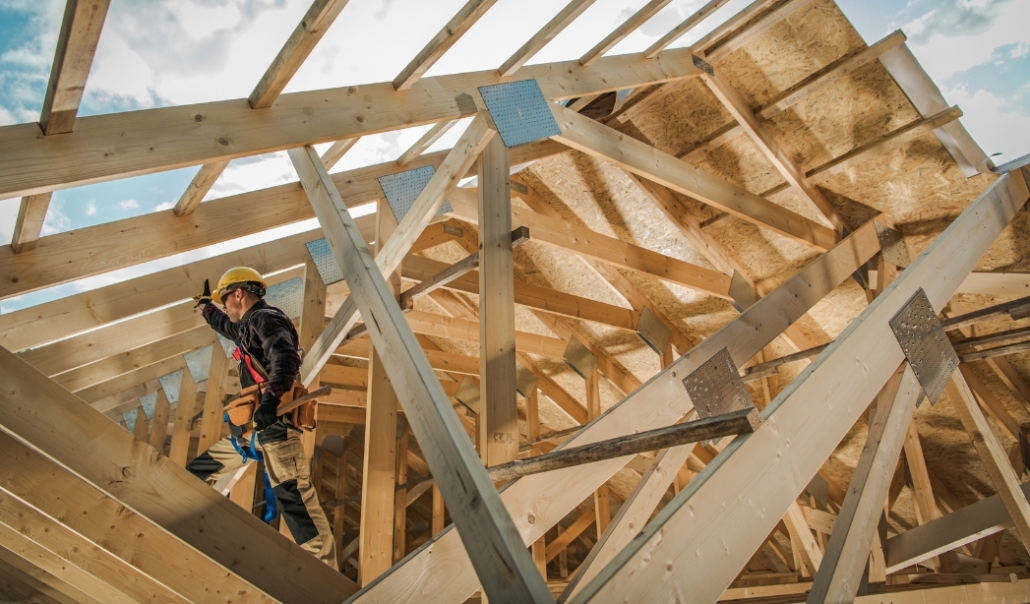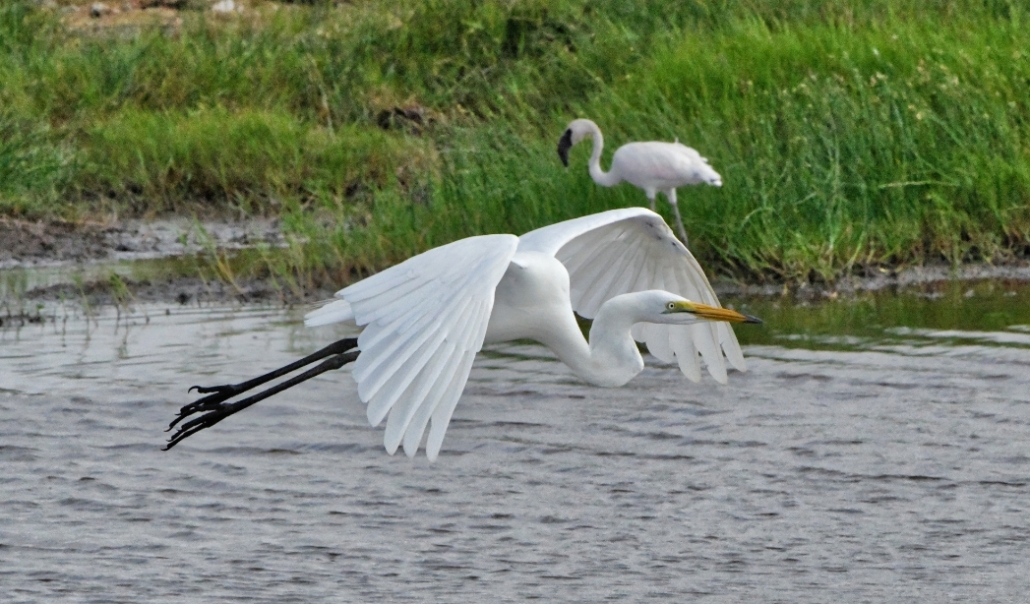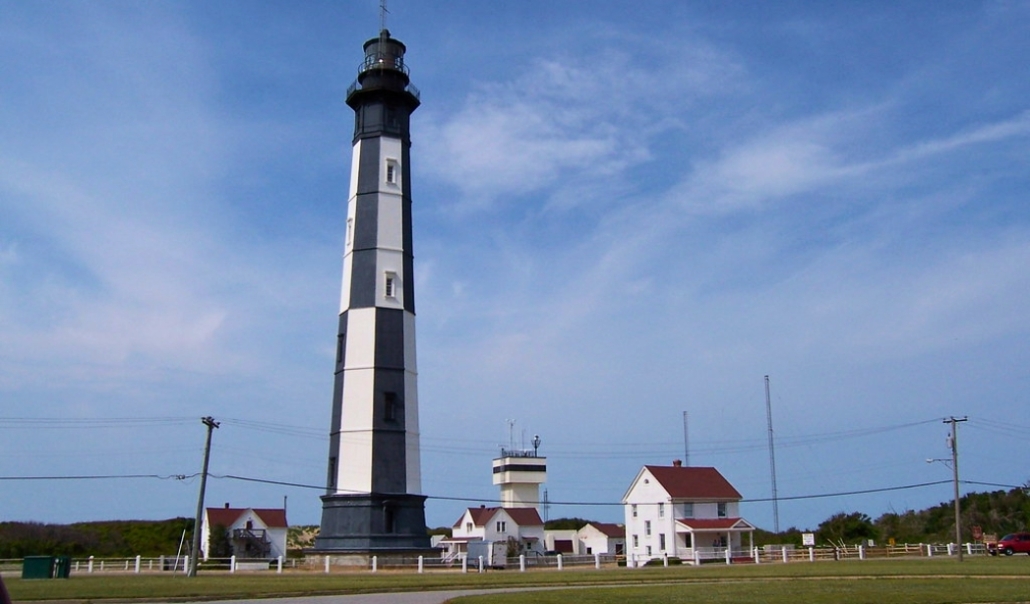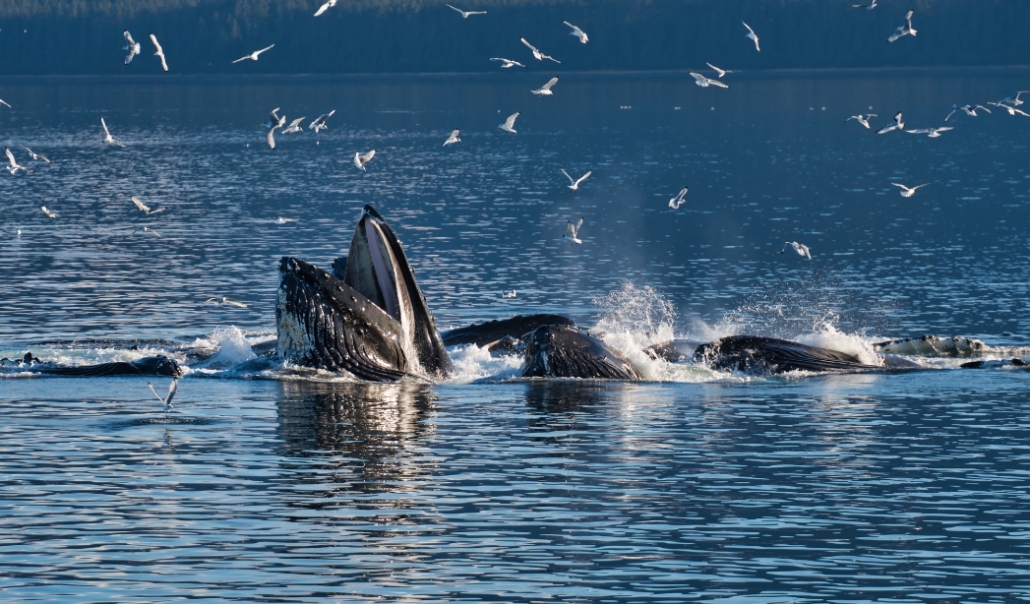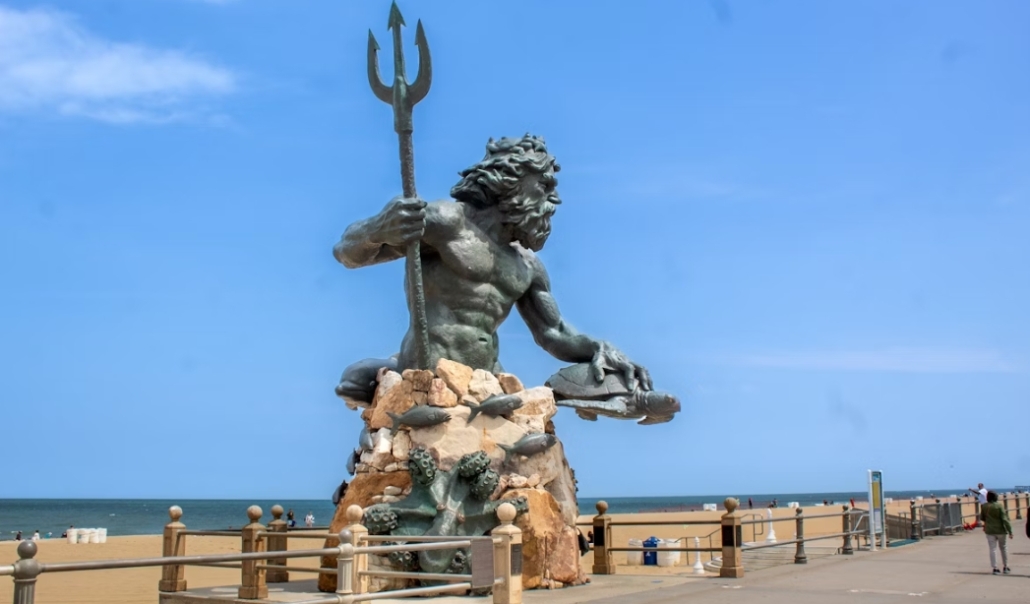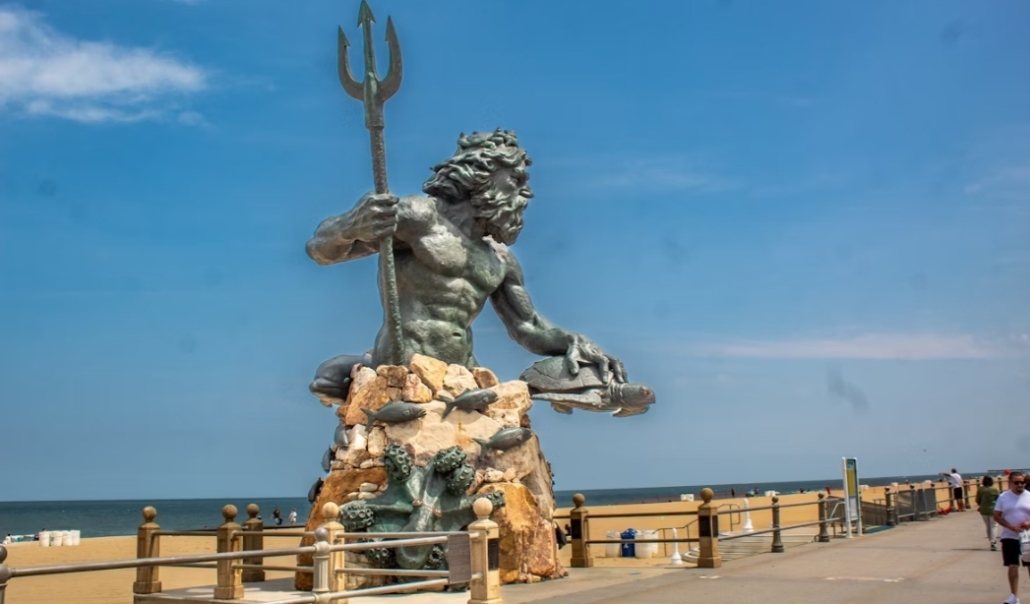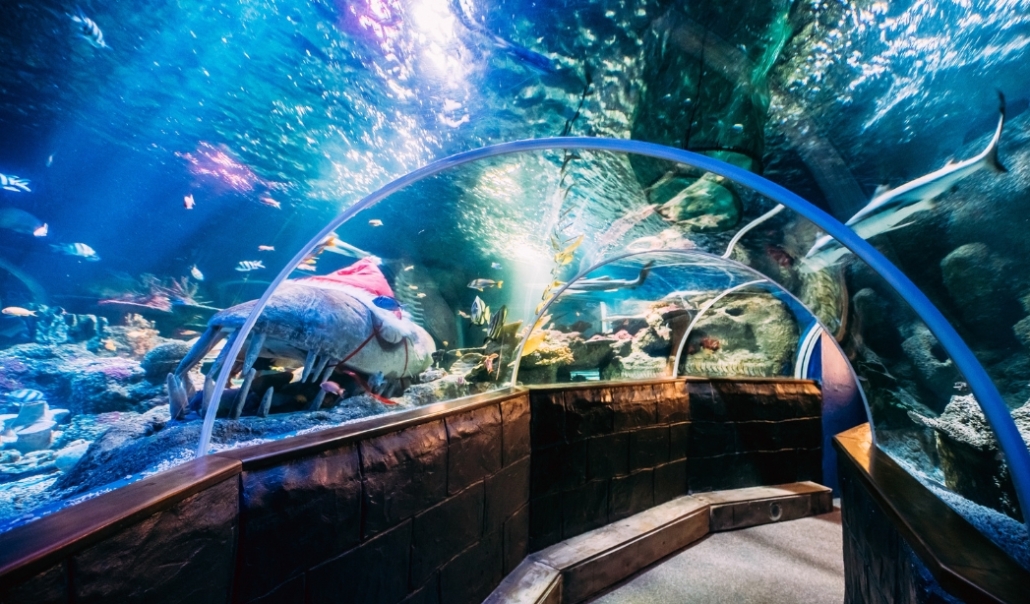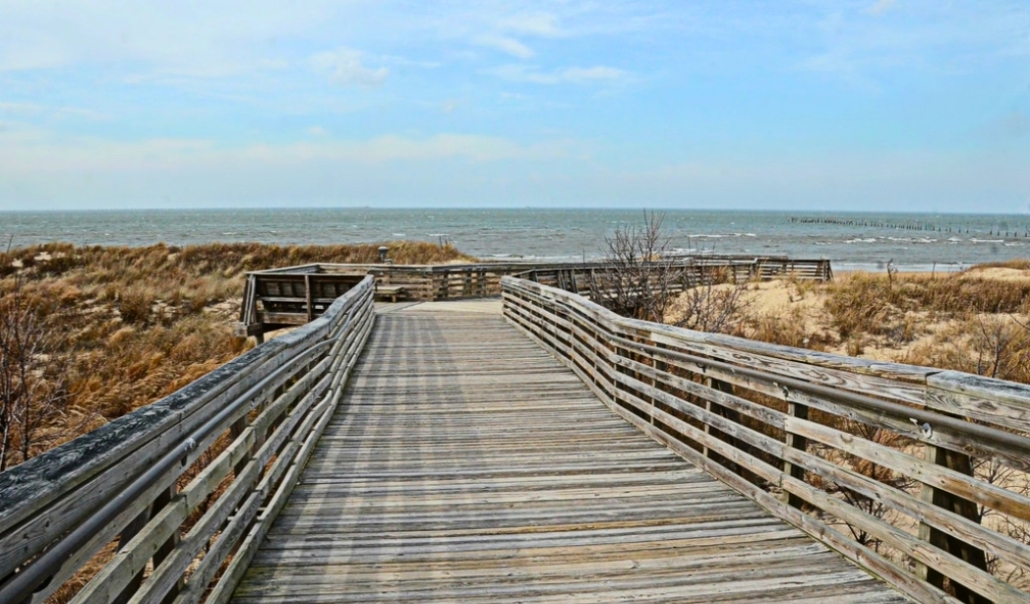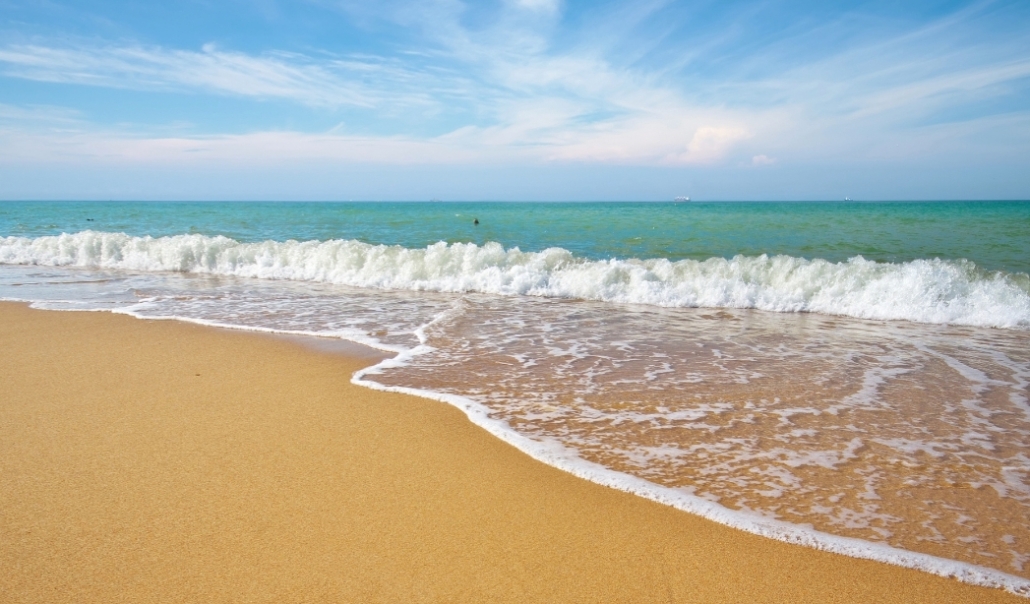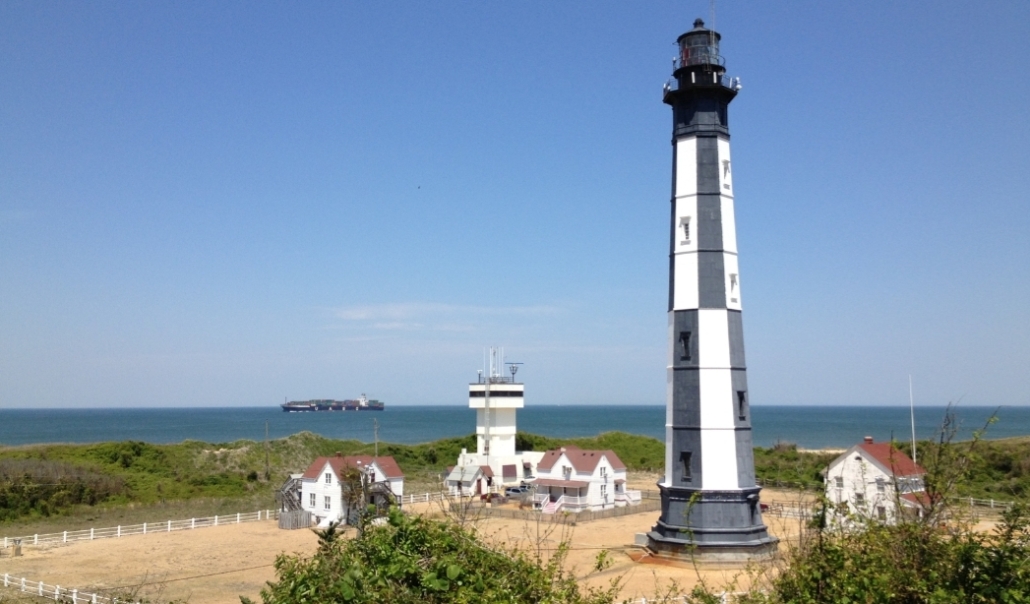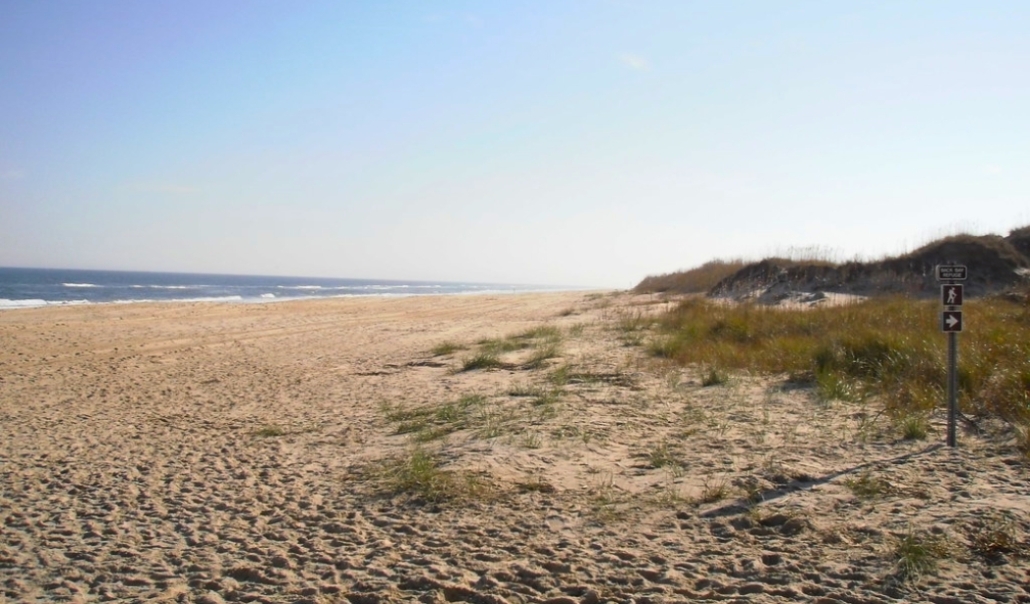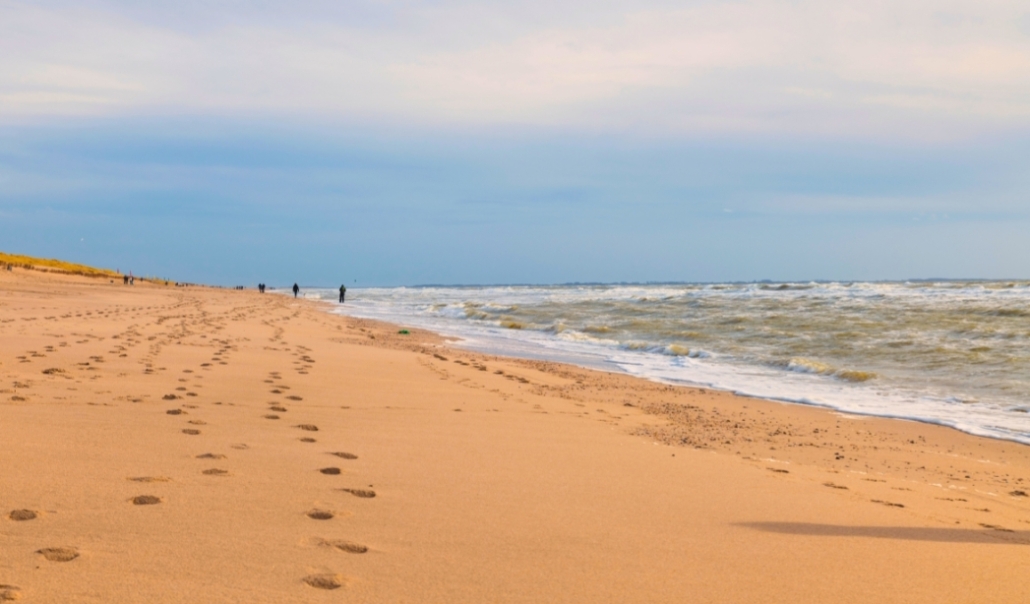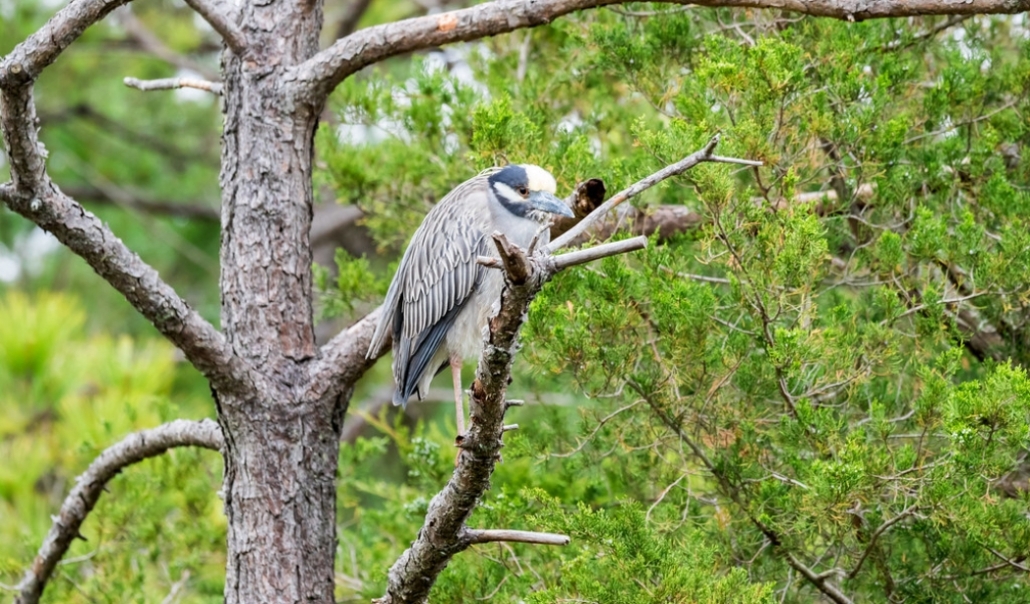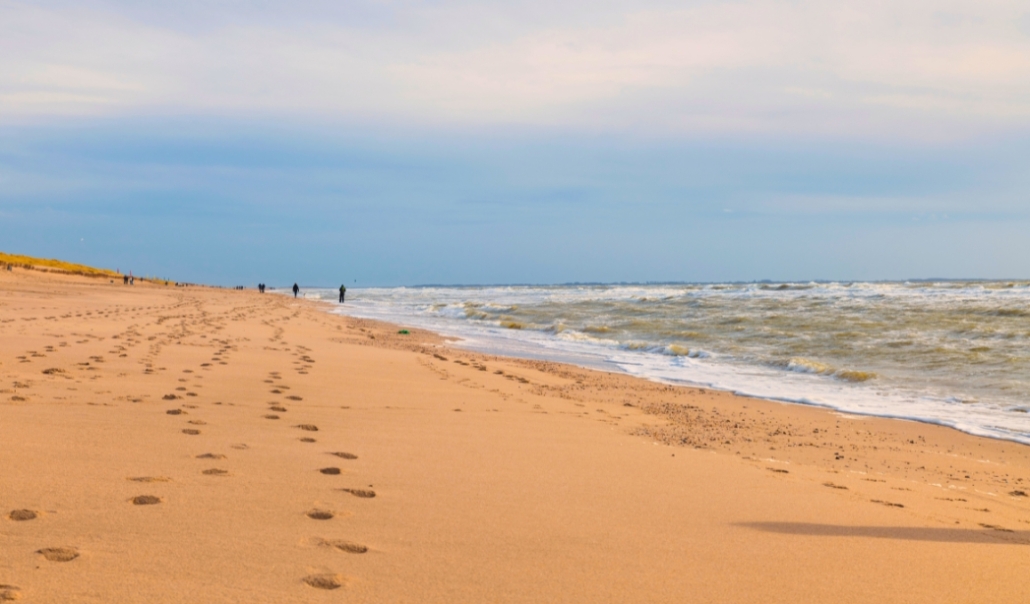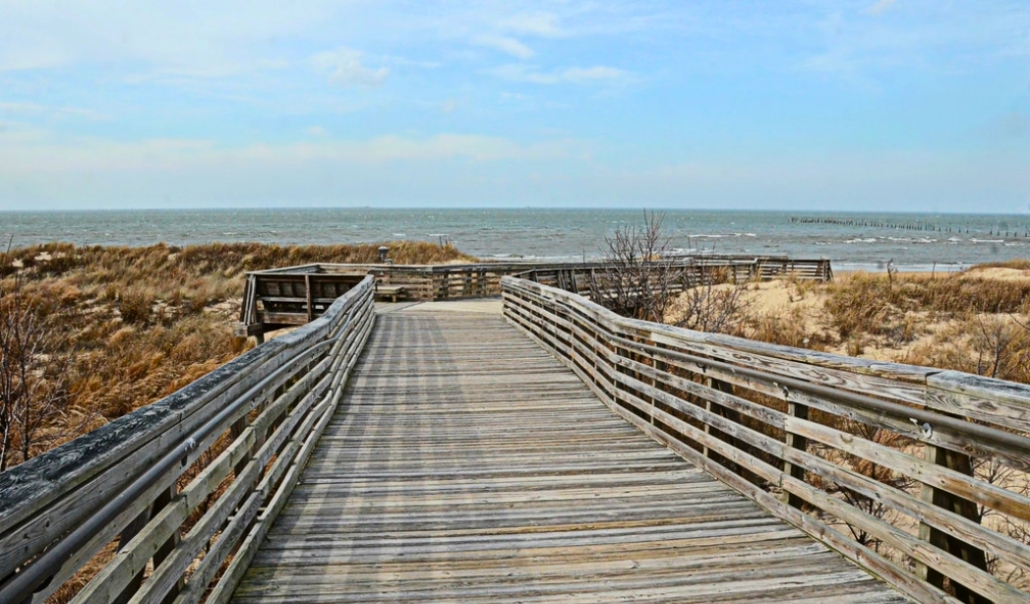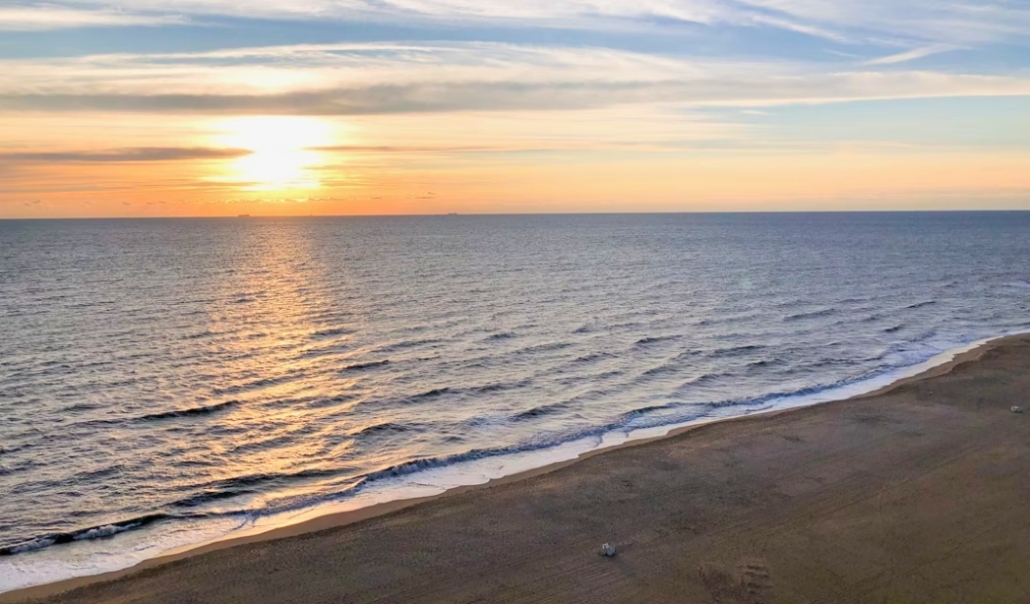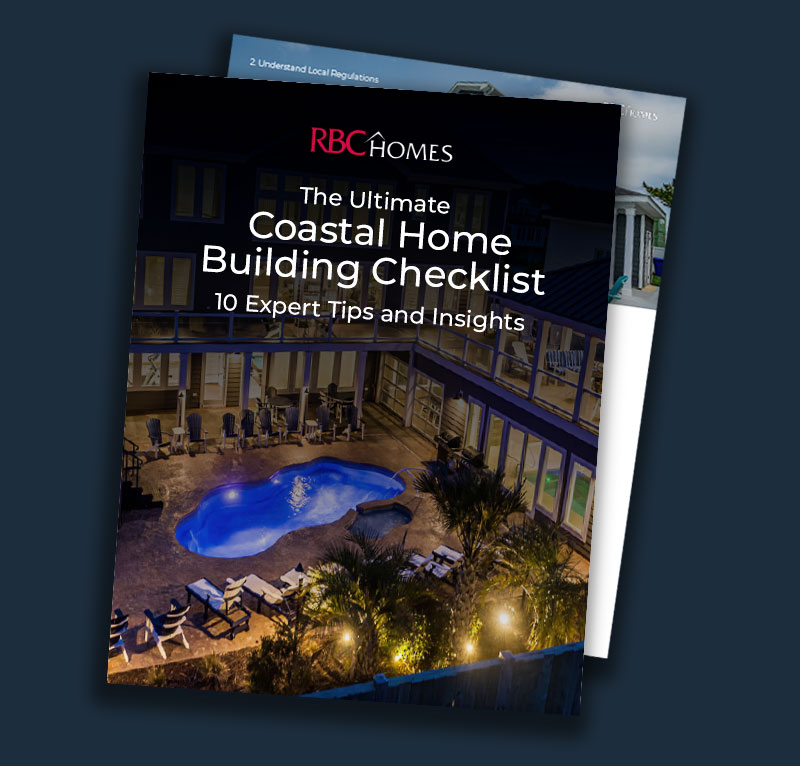ADUs in Virginia Beach – 5 Things Homeowners Must Know
An Accessory Dwelling Unit (ADU) is a smaller, independent home built on the same property as a main residential house. In Virginia Beach, ADUs are gaining popularity among homeowners looking to create extra living space, generate rental income, or provide housing for family members—all within the framework of local zoning and residential codes.
ADUs in Virginia Beach are subject to local regulations, but when properly planned, they provide a smart, adaptable solution to modern housing demands.
Types of ADUs Available in Virginia Beach
Virginia Beach homeowners have several ADU options to choose from, depending on their property, budget, and goals. The most common types include:
- Detached Units – Standalone backyard cottages or small homes.
- Attached Units – Additions or garage conversions that are connected to the main house.
- Interior Conversions – Renovated spaces within the main home, like basements or attics.
- Repurposed Existing Structures – Transformed sheds or outbuildings adapted into livable spaces.
- Modular or Prefab ADUs – Factory-built units delivered and installed onsite.
Whether you’re exploring ADUs for rental income, multigenerational living, or increasing property value, this guide will walk you through everything you need to know—from local laws and design options to costs and contractor tips.
Read on to learn how you can build a compliant, valuable ADU in Virginia Beach.
Disclaimer: Accessory Dwelling Units (ADUs) are only permitted under very limited zoning conditions in Virginia Beach — specifically in R-40 zoning districts. Due to these limitations, please understand that building an ADU may not be possible in many areas. We encourage you to contact RBC Homes or your local zoning office for more information regarding your specific property.
However, for homeowners seeking additional living space or functional outbuildings, permitted alternatives such as pool houses, guest-ready detached garages, or custom workshops may be a great solution.
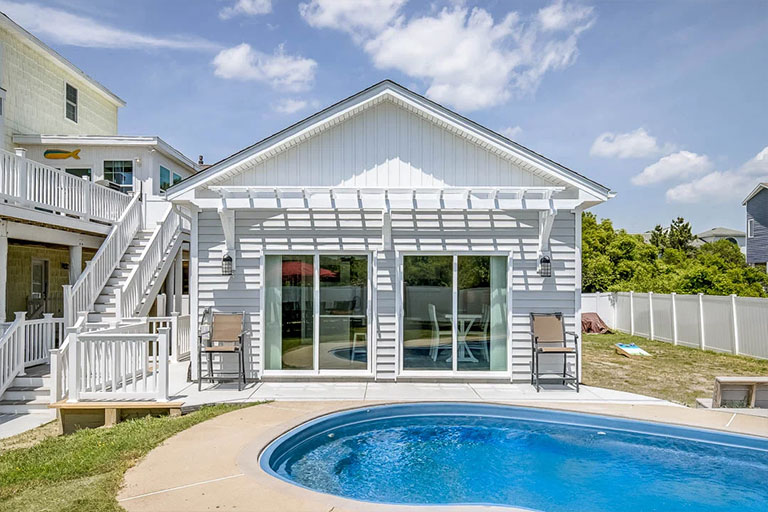
1. Detached Units (Backyard Cottages)
Detached ADUs, often referred to as backyard cottages, are stand-alone structures built separately from the main residency, typically in the backyard. They provide excellent flexibility, added privacy, and a strong opportunity for generating rental income.
In Virginia Beach, these units are ideal for:
- Hosting aging parents or adult children
- Creating a private guest house
- Generating rental income through long-term or short-term leases
Detached ADUs in Virginia Beach must comply with local zoning laws, including setbacks, height limits, and lot-based size restrictions. These structures typically include their own entrances, kitchens, and bathrooms, offering full independence from the main home.
2. Attached Units (Garage Conversions, Additions)
Attached ADUs are created by converting spaces like garages or by adding new structures that are physically connected to the main home. These units share at least one wall with the main house but function as a self-contained living space.
Garage conversions are a popular choice in Virginia Beach because they:
- Utilize existing square footage, reducing construction costs
- Require less site disruption and permit work
- Can be finished more quickly than detached builds
Additions, on the other hand, allow you to expand your home’s footprint while maintaining a unified structure. This option works well for homeowners who want to maintain visual cohesion while adding a private space for tenants or family members.
Both formats must meet building codes and zoning requirements, including setbacks, maximum lot coverage, and independent access. Attached ADUs often share utilities with the main home, which can simplify connections but may require updates to plumbing and electrical systems.
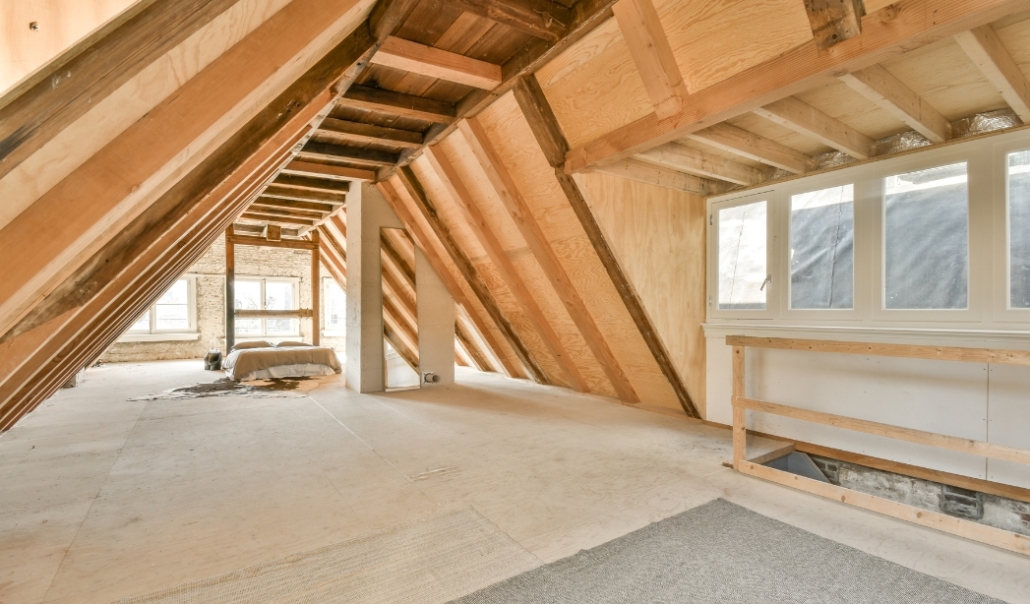
3. Interior Conversions (Basements, Attics)
Interior ADU conversions involve transforming existing spaces within the main home—like basements or attics—into fully functional living units. These ADUs are among the most affordable options for adding livable space without altering the home’s existing exterior structure.
In Virginia Beach, basement and attic conversions are especially appealing for:
- Homeowners with underutilized space
- Families looking to create multi-generational housing
- Property owners aiming to boost rental income with minimal construction
To meet local building codes, interior ADUs must include:
- A separate entrance (can be through a shared foyer)
- Adequate ceiling height (typically 7 feet or more)
- Proper egress windows or exits (especially for basement units)
- Fire safety measures such as smoke detectors and fire separation
Since these units are within the main structure, they often share utilities and infrastructure, which can simplify setup but still require upgrades for separate living (like kitchenettes and bathrooms).
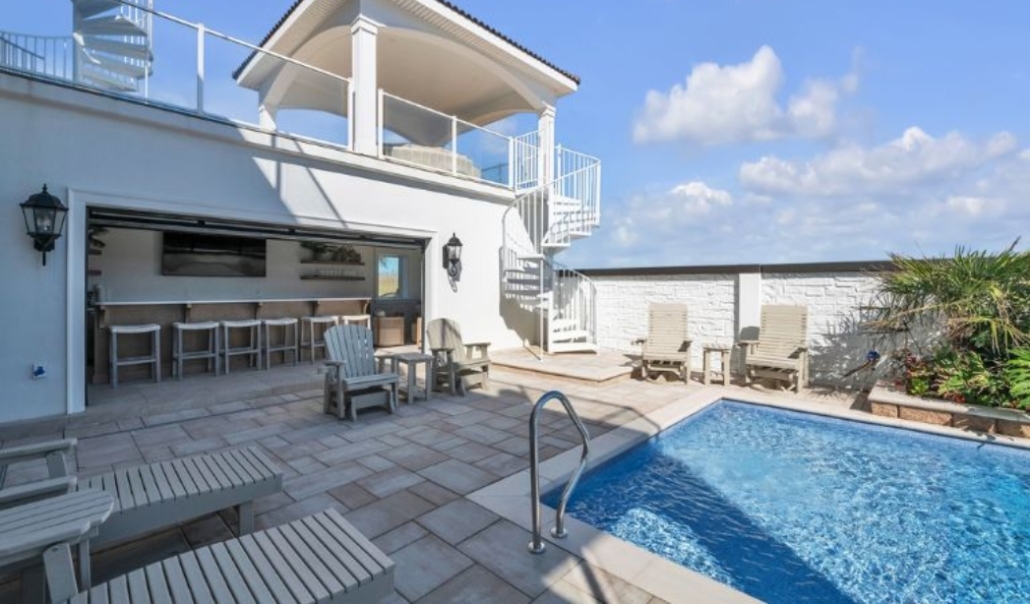
4. Repurposed Existing Structures
Repurposed ADUs in Virginia Beach involve transforming existing non-living structures—like workshops, pool houses, or sheds—into legal, livable units. This approach is ideal for homeowners looking to reduce construction time and costs by using what’s already on their property.
Benefits of repurposing include:
- Lower material and labor costs (compared to building from scratch)
- Reduced environmental impact by reusing structures
- Faster project timelines if the building is already in good condition
However, turning an existing structure into an ADU in Virginia Beach requires careful planning. The building must meet Virginia Residential Code standards for:
- Structural integrity
- Insulation and energy efficiency
- Plumbing, electrical, and HVAC systems
- Fire safety and egress
Additionally, zoning regulations and setback requirements still apply. Homeowners must obtain the appropriate permits and possibly bring the structure up to modern code, which may involve significant retrofitting.
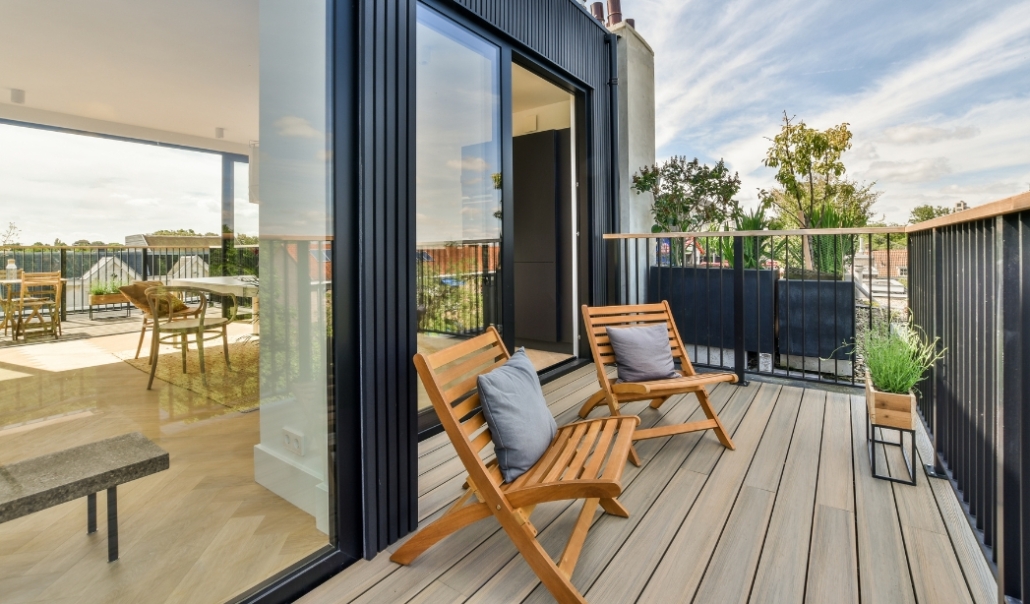
5. Modular or Prefab ADUs
Modular or prefabricated ADUs are factory-built units delivered and assembled on your property. These units are constructed off-site under controlled conditions and then installed on a foundation at your home, significantly speeding up the building process.
In Virginia Beach, prefab ADUs are becoming an attractive option due to:
- Faster timelines – reduced delays from weather or on-site issues
- Predictable costs – clear pricing and fewer unexpected expenses
- High-quality control – consistent standards in factory construction
Modular ADUs must still comply with Virginia Beach zoning and residential building codes, including requirements for:
- Permitted locations and lot size
- Maximum unit size and placement
- Utility connections and independent access
One advantage of modular ADUs is the ability to choose from pre-designed layouts that fit various needs, from studio apartments to multi-room dwellings. However, it’s essential to work with a supplier familiar with local permitting processes to ensure smooth approval and installation.
Local Zoning and Regulations
Before building ADUs in Virginia Beach, homeowners must follow local zoning rules that dictate where units can be placed and how they fit on the lot. These regulations help maintain safety, proper spacing, and neighborhood consistency.
Permitted Zones and Setback Requirements
Before building an ADU in Virginia Beach, it’s essential to understand where these units are legally allowed and how they must be positioned on your property. The city’s zoning ordinance outlines specific requirements based on residential district classifications.
Permitted Zones
ADUs are only permitted in very limited cases within Virginia Beach — specifically in the R-40 residential zoning district. Most standard residential zones such as R-5, R-7.5, and PUDs do not allow ADUs. Always consult the Virginia Beach Planning Department for the most current zoning restrictions before pursuing an ADU project.
However, zoning approval may depend on lot size, existing structures, and intended use (owner-occupancy vs. rental). Be sure to verify requirements with the Virginia Beach Planning Department before starting your project.
Setback Requirements
Setbacks refer to the minimum distance a structure must be from property lines, fences, and other buildings. For ADUs in Virginia Beach, general setback guidelines may include:
- Rear yard: 5–15 feet minimum
- Side yard: 5–10 feet minimum
- Distance from main dwelling: Often 10 feet or more for detached units
Keep in mind that corner lots and flag lots may have different rules. Height restrictions and lot coverage limits also apply, and exceeding them may require a zoning variance or special exception.
Size and Placement Restrictions
Virginia Beach sets specific limits on ADUs in terms of size and placement to maintain neighborhood character and support safe, practical lot use.
Key size and layout limitations include:
- Maximum unit size: ADUs are typically restricted to 800 square feet or 50% of the primary home’s living area, whichever is smaller.
- Height limits: Most ADUs may not exceed 25 feet or two stories, depending on the zoning district.
- Lot coverage: Total structures, including the ADU, must not exceed the maximum allowable lot coverage defined for the zoning area.
- Setbacks from the main home: Detached units must be at least 10 feet from the primary dwelling.
- Yard placement rules: ADUs cannot be located in the front yard and must comply with side and rear setback requirements already covered above.
Staying within these size and placement guidelines will help you avoid costly design changes or permit denials during the approval process.
Ownership and Occupancy Guidelines
Virginia Beach places specific requirements on who can live in and manage an ADU to ensure these units serve their intended residential purposes, not commercial or speculative interests.
Here’s what you need to know:
- Owner-occupancy requirement: In most zoning districts, either the primary home or the ADU must be occupied by the property owner. This rule helps maintain community integrity and reduces absentee ownership.
- Single ownership only: ADUs cannot be sold separately from the main home. The lot must remain a single, undivided property.
- Rental use restrictions: Long-term rentals are generally permitted, but short-term rentals (under 30 days) may be restricted or require additional licensing, depending on local ordinances.
- Deed restrictions and affidavits: When applying for an ADU permit, homeowners may be required to sign an affidavit or record a deed restriction affirming compliance with owner-occupancy rules.
These guidelines help ensure that ADUs in Virginia Beach are used for housing — not loopholes — and support balanced neighborhood growth.
Building Code and Safety Standards
Building an ADU in Virginia Beach isn’t just about zoning — your unit must also meet the standards set by the Virginia Residential Code (VRC). These codes are designed to ensure that all dwellings, including ADUs, are safe, habitable, and structurally sound.
Compliance with the Virginia Residential Code
All ADUs must follow the most recent version of the Virginia Residential Code, which includes requirements for construction, electrical systems, plumbing, energy efficiency, and fire safety.
Key areas of compliance include:
- Structural integrity: ADUs are required to follow the same structural and foundation codes as standard residential homes.
- Insulation and energy code adherence: Proper insulation and energy-efficient design are mandatory.
- Ingress and egress: Units must have at least one legal exit and, for sleeping areas, egress windows that meet minimum size and accessibility standards.
- Ceiling heights: Finished spaces must generally have ceilings of at least 7 feet in height.
- Sound separation (for attached or interior units): Walls between the ADU and the main home may require soundproofing per code.
Inspections will be required throughout construction to verify compliance. Working with a contractor who understands the VRC and the local building department’s expectations is key to a smooth approval process.
Required Safety Features (Egress, Alarms)
To ensure the safety of occupants, ADUs in Virginia Beach must be equipped with the same life-safety systems required in all residential structures.
Key safety features include:
- Egress points: Every sleeping room must have at least one operable window or door to the outside, sized and located per egress code requirements.
- Smoke detectors: Smoke alarms must be installed in each sleeping area, outside each sleeping area, and on every level of the unit.
- Carbon monoxide detectors: Required if the ADU contains fuel-burning appliances or is attached to the main home.
- Fire separation: For attached or interior ADUs, fire-rated walls or ceilings may be required between the unit and the primary dwelling.
These features are non-negotiable and must be inspected and approved during the permitting process to ensure occupant safety.
Utility Connection Considerations
When adding an ADU, you must also plan how utilities—water, sewer, electricity, and gas—will be supplied and metered.
Common utility considerations:
- Shared vs. separate systems: ADUs can share utilities with the main home or have independent systems, depending on design and local infrastructure capacity.
- Sewer and water hookups: Tapping into municipal lines may require fees or capacity assessments, especially for detached units.
- Electrical load: An electrical service upgrade may be needed to safely support both units.
- Metering: In some cases, especially for rental ADUs, separate utility meters are recommended or required.
Consulting with licensed professionals early in your planning process will help avoid costly infrastructure surprises.
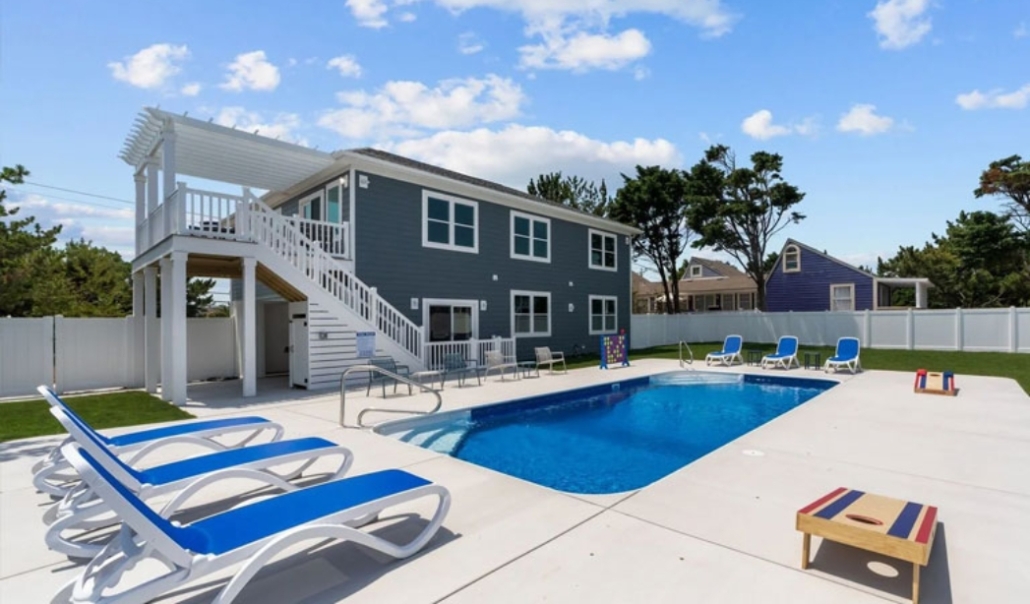
Approval and Permitting Process
Building an ADU in Virginia Beach involves more than just design and construction — you’ll need to navigate the city’s permitting process to ensure your project is legal and code-compliant.
Allow-by-Right vs. Special Exceptions
Some properties in Virginia Beach allow ADUs by-right, meaning they’re permitted under current zoning regulations without needing special approval — as long as the design complies with all size, placement, and use requirements.
In other cases, you may need to apply for a Special Exception through the Board of Zoning Appeals if:
- Your lot doesn’t meet minimum size or frontage requirements
- Your proposed ADU exceeds the standard height or square footage limits
- You’re planning a unique structure that doesn’t fall under standard guidelines
Applying for a Special Exception involves public notice, a formal hearing, and added fees — and approval isn’t guaranteed.
Required Documents and Inspections
To get started, you’ll need to submit a comprehensive application packet, which typically includes:
- Site plans showing the ADU layout, setbacks, and access
- Floor plans, elevations, and structural drawings
- Proof of ownership and possibly an owner-occupancy affidavit
- Energy calculations and engineering reports (for some builds)
Once approved, you’ll go through scheduled inspections at key stages of construction: footing/foundation, framing, mechanicals, and final occupancy. Inspections are conducted by the city’s building department to verify code compliance.
Permit Timelines and Associated Fees
Processing times can vary, but here’s a general timeline:
- Standard ADUs (by-right): 4–8 weeks for approval, depending on volume
- Special Exceptions: 2–3 months or longer due to hearings and reviews
Expect to pay:
- Application fees (typically $100–$300)
- Plan review and inspection fees based on the size and scope of the project
- Utility connection or impact fees, if applicable
Hiring a contractor familiar with ADU permitting in Virginia Beach can streamline this process and reduce the risk of costly delays.
Costs and Financing Options
Understanding the financial aspects of building ADUs in Virginia Beach is key to effective planning and maximizing long-term return on investment. From costs to funding options, here’s what to consider.
Estimated Construction Costs
The cost of building an ADU varies widely depending on the type, size, materials, and complexity of the project. In Virginia Beach, general price ranges are:
- Interior conversions: $50,000–$100,000
- Garage conversions or attached units: $75,000–$150,000
- Detached or modular ADUs: $100,000–$250,000+
Factors that influence cost include foundation work, utility upgrades, finishes, and site prep. Labor costs and permitting fees should also be factored in early.
Financing Methods (HELOCs, Loans, Grants)
Many homeowners finance their ADU projects using a mix of traditional and creative funding options:
- HELOC (Home Equity Line of Credit): Leverage the equity in your home for flexible, interest-only payments during construction.
- Cash-out refinance: Replace your current mortgage with a larger one to fund the ADU build.
- Renovation loans (FHA 203k, Fannie Mae Homestyle): Roll construction costs into your mortgage.
- Personal loans or credit cards: Suitable for smaller-scale interior conversions.
- Grants and incentives: While limited, Virginia occasionally offers local or state programs for affordable housing or energy-efficient ADU builds—check with city housing authorities.
Consulting with a lender early can help you compare options and qualify for the best terms.
Potential ROI and Property Value Impact
Adding an ADU in Virginia Beach can deliver strong financial returns through:
- Rental income: Monthly rent from a long-term tenant can offset mortgage payments or serve as passive income.
- Increased resale value: ADUs often boost property values by $50,000–$150,000 depending on the market and quality of construction.
- Appeal to buyers: Homes with ADUs are attractive to multigenerational families, remote workers, or investors seeking income-generating properties.
Though initial costs can be significant, a well-designed ADU is often a profitable and future-proof investment.
ADU Benefits in Virginia Beach
Accessory Dwelling Units (ADUs) in Virginia Beach offer more than just flexible living space — they also deliver meaningful financial, lifestyle, and environmental benefits for homeowners.
Rental Income and Wealth Building
A major reason homeowners choose to build ADUs is to create a source of passive rental income. Whether leased to long-term tenants or used for multi-month rentals, an ADU can offset mortgage costs or supplement retirement savings.
Financial benefits include:
- Steady rental cash flow
- Increased property value and resale potential
- Tax advantages from depreciation and expenses
In a competitive market like Virginia Beach, strategically placed ADUs can earn strong rental rates and boost your investment returns more quickly.
Multi-generational Living and Aging in Place
ADUs are ideal for families seeking flexible living arrangements. They provide a private, fully functional space for:
- Aging parents who want proximity with independence
- Adult children saving for homeownership
- Caregivers or family members with special needs
By promoting aging in place, ADUs allow seniors to remain in their communities while reducing housing and caregiving costs. This setup balances privacy with family connection.
Efficient Use of Land and Environmental Benefits
ADUs make better use of existing residential lots without the need for large-scale development. This smart land use helps reduce urban sprawl and preserves green space in growing communities like Virginia Beach.
Environmental advantages include:
- Smaller building footprints and lower energy usage
- Potential for sustainable features like solar panels or green roofs
- Reduced transportation needs when family lives on one property
In short, ADUs support both personal and community sustainability goals.

Choosing a Contractor in Virginia Beach
Building an ADU is a major investment — and selecting the right contractor is critical to its success. A skilled local builder not only ensures quality construction but also helps navigate the permitting and inspection process specific to Virginia Beach.
What to Look for in an ADU Contractor
The right ADU contractor should have:
- Local experience with Virginia Beach zoning and residential codes
- A proven track record of completing ADU or small-scale residential builds
- Knowledge of energy efficiency standards, accessibility, and sustainable design
- Clear, transparent communication and realistic project timelines
Look for builders who can offer design-build services, meaning they handle both design and construction — streamlining the process and reducing delays.
Spotlight: RBC Homes – Custom Backyard Builds Done Right
RBC Homes is a trusted name in the Virginia Beach area, known for our commitment to craftsmanship, custom design, and client satisfaction. With decades of local building experience, RBC offers homeowners : Tailored backyard living solutions — such as pool houses, guest-ready garages, and custom outbuildings — designed to fit your space and zoning requirements.
Whether you’re building a detached cottage or converting a garage, RBC Homes delivers reliable results with local expertise and personal service.
Pre-Hiring Checklist
Before signing a contract, make sure to:
- Verify licensing and insurance
- Check references and review past projects
- Confirm familiarity with Virginia Beach ADU requirements
- Get a written timeline and detailed scope of work
- Ask about permitting support and inspection coordination
Taking the time to vet your contractor can save you money, stress, and costly code issues down the line.
Frequently Asked Questions
Yes, Virginia Beach allows Accessory Dwelling Units (ADUs) in several residential zoning districts, including R-5, R-7.5, AG, and some PUDs. However, each project must meet local zoning, size, setback, and occupancy regulations. In some cases, a Special Exception may be required if your property does not meet standard criteria.
The cost of building an ADU in Virginia varies based on the type, size, and construction method. On average:
– Interior conversions range from $50,000 to $100,000
– Garage or attached units typically cost $75,000 to $150,000
– Detached or modular ADUs often range from $100,000 to $250,000+
Costs can fluctuate based on site conditions, utility upgrades, design complexity, and material choices.
Virginia occasionally offers housing-related grant programs that may support ADU development, especially for affordable housing or aging-in-place initiatives. Availability varies by year and locality. Homeowners should check with the Virginia Department of Housing and Community Development (DHCD) or their local housing office for current funding opportunities.
Do I need a permit to build a shed in Virginia Beach?
Yes, a permit is typically required to build a shed or any accessory structure over a certain size in Virginia Beach. For most sheds over 256 square feet, you must submit plans and obtain building permits. Even smaller structures may be subject to zoning and setback rules. Always verify requirements with the city’s Permits and Inspections Office before construction.
Conclusion
Accessory Dwelling Units (ADUs) provide Virginia Beach homeowners with a practical way to expand living space, earn rental income, and boost long-term property value. Navigating zoning laws, building codes, and contractor selection requires thoughtful planning and a solid grasp of local requirements.
Whether you’re building a detached cottage, converting an interior space, or installing a prefab unit, a well-executed ADU project can deliver lasting rewards.
Looking to add space or functionality to your property?
Partner with RBC Homes — a trusted Virginia Beach builder known for high-quality, code-compliant custom garages, pool houses, and guest-ready backyard structures.


